I'm gonna tell you how to get in shape and stay in shape while still living the good life. Get ready for you next vacation, social outing or for your general health with my fitness & self defense programs. Enjoy my posts, share and thanks, www.brodericksorrell.com
Friday, October 10, 2014
Don't Do Crunches!
Broderick Sorrell
www.brodericksorrell.com
Wednesday, October 8, 2014
Best Ways to Ease Knee Pain
Here’s the good news: Most chronic knee pain is avoidable. New research published in the New England Journal of Medicine suggests that exercise and physical therapy are just as effective as surgery for relief from chronic knee pain related to arthritis. Learning to strengthen and stretch key muscles that support the knees, and other ways to protect and take care of our knees, can ultimately prolong the health of this vital body part.
Join Brody's Fitness & Self Defense Club www.brodericksorrell.com for Expert fitness & self defense tips and a FREE Boot Camp every month.
As a society, our butt muscles are weak. When the main butt muscle (gluteus maximus) is weak, it causes the pelvis to drop and the upper thigh bone (femur) to fall inward. This imbalance creates painful downward stress on the hip, knee and ankle every time you take a step.
Hip extensions are helpful exercises to strengthen the glutes.
Strengthening the core helps to keep your back in a neutral spine position and places the lower extremities — specifically the knees — in the best possible position for movement without joint compression.
There are so many ways to strengthen your abdominal muscles besides doing crunches. ...
Pilates was created with a strong emphasis on improving core strength to improve the function of the entire body. Or try fun core workout options like abs ball exercises, an abs routine on a fitness ball, or a core workout with elements of dance, yoga or kickboxing.
Why? Fat decreases muscle strength, and excess body weight adds strain to knee joints. In fact, there’s an inverse relationship between body weight and quadriceps muscle strength: the higher your body weight, the weaker your knee muscles.
To start burning those extra calories required for weight loss without adding additional impact to the knees, try water aerobics, an elliptical trainer or cycling (making sure you have proper seat height).
So embrace the flat shoe fashion trend and stretch out those calves. On the flip side, replace your workout sneakers frequently — every 300 miles, which could be three months or a year depending on your level of activity. This is a safe way to avoid wearing a shoe with poor cushioning support for your arches and joints.
Join Brody's Fitness & Self Defense Club www.brodericksorrell.com for Expert fitness & self defense tips and a FREE Boot Camp every month.
Wednesday, September 17, 2014
Lighten the Foods You Already Love
Tuesday, September 16, 2014
Go Walking
- Trade your power mower for a push version.
- Park your car at the back of the lot.
- Get out of the office building and enjoy walking meetings.
- Sweep the drive or rake the leaves instead of using a leaf-blower.
- Get off the bus a few stops earlier.
- Hike the mall, being sure to hit all the levels.
- Take the stairs every chance you get.
- Sign up for charity walks.
- Crank the music and get your heart rate up the next time you mop or vacuum.
Thursday, September 11, 2014
2 Painless Ways to Lose Weight
1. Add, Don't Subtract
2. Forget About Working Out
Monday, September 8, 2014
13 rules to safely exercise while pregnant
Mon-Sat 7am &530pm
Exercising during your pregnancy has great benefits – it can help prepare you for labor and childbirth and lift your spirits – but you need to approach working out with extra caution. Whether you're a regular exerciser looking to continue your regimen during pregnancy or a former couch potato looking to get moving, follow these 13 rules to keep you and your baby safe.
2. Take in extra calories
Exercise burns calories, so make sure to eat well to help nourish and strengthen your body. While you're pregnant, you'll naturally gain weight as your baby grows. The amount you'll need to gain will vary based on your pre-pregnancy weight.If your body mass index (BMI) is in a healthy range (between 18.5 and 24.9), you'll need to eat 300 or so more calories a day than before you were pregnant – and probably more than that if you're exercising. If you're underweight or overweight you may need to gain a little more or a little less than someone with a healthy BMI and adjust your calories accordingly.
Your doctor will monitor your weight as your pregnancy progresses and can help you figure out how to keep your weight gain on track through diet and exercise.
3. Steer clear of dangerous sports
Avoid contact sports, as well as activities that might throw you off balance, such as horseback riding, downhill skiing, or mountain biking. Regular cycling early in your pregnancy should be okay if you're comfortable on a bike, but it's probably best to stick to stationary or recumbent bikes later in pregnancy.Even if you're normally graceful, keep in mind that during pregnancy the increased levels of the hormone relaxin, which relaxes pelvic joints in preparation for childbirth, loosen all ligaments and joints, making you more susceptible to sprains and injury from falls. See our list of the best kinds of exercise for pregnancy.
4. Wear the right clothes
Wear loose-fitting, breathable clothing. Dress in layers so it's easy to peel off a layer or two after you've warmed up or if you feel too hot. Make sure your maternity bra offers enough support, and choose athletic shoes that fit your feet properly and offer good support. If your shoe size has changed because of mild swelling, stash away your pre-pregnancy sneakers and buy a new pair.5. Warm up
Warm-ups prepare your muscles and joints for exercise and build your heart rate up slowly. If you skip the warm-up and jump into strenuous activity before your body is ready, you could strain your muscles and ligaments and experience increased postworkout aches and pains.6. Drink plenty of water
Drink water before, during, and after exercising. Otherwise, you can become dehydrated, which can cause contractions and raise your body temperature, sometimes to levels that are dangerous for you and your baby.James M. Pivarnik, director of the Center for Physical Activity and Health at Michigan State University, says that while there's no official recommendation for how much water pregnant women should drink while exercising, a good guideline is to drink one cup (8 ounces) before you exercise, one cup for every 20 minutes of exercise, and one cup after you finish your workout. In hot or humid weather, you'll need more.
7. Don't lie flat on your back
Avoid lying flat on your back after the first trimester. This position puts pressure on a major vein called the vena cava, which will reduce blood to your heart and may diminish blood flow to your brain and uterus, making you dizzy, short of breath, or nauseated.Some women are comfortable in this position well into their pregnancies, but this isn't necessarily a good gauge of whether blood flow to the uterus is affected. Placing a pillow under your right hip or buttock will allow you to be almost supine without compressing the vena cava.
8. Keep moving
Standing in one place for prolonged periods – as when you're lifting weights or doing yoga poses – can decrease blood flow to the uterus and cause blood to pool in your legs, making you dizzy. Keep moving by switching positions or walking in place.9. Don't overdo it
Don't exercise until you're exhausted. A good rule of thumb: Slow down if you can't comfortably carry on a conversation. In general, the best guideline is to listen to your body. When something hurts, that means something's wrong, so stop. You should feel like you're working your body, not punishing it.To be extra safe, read our list of 10 signs of danger during pregnancy exercise.
10. Don't get overheated
Avoid letting yourself get too hot, especially during the first trimester when your baby's major organs are developing. Raising your core temperature above 102 degrees Fahrenheit for more than 10 minutes could harm your baby.The increased blood flow and higher metabolic rate that happen when you're pregnant mean you'll feel warmer than usual, and doubly so when you exercise. And since feeling warm is common in pregnancy, you may get overheated much faster than you normally would, even before your belly is big.
Signs of being overheated are largely individual, but pay attention if you're sweating a lot or feel uncomfortably warm, nauseated, dizzy, or short of breath. To cool off quickly, stop exercising, take off layers, and change your environment: Seek out air conditioning or step into a cool shower. Hydrating is key, too, so drink lots of water.
11. Get up from the floor slowly
As your belly grows, your center of gravity shifts. That's why it's important to take great care when you change positions. Getting up too quickly can make you dizzy and may cause you to lose your footing and fall.12. Cool down
At the end of your workout, take five to 10 minutes to walk in place and do some pregnancy-friendly stretching. This will allow your heart rate to get back to normal and help to prevent sore muscles.13. Make it a habit
Make a commitment to work regular exercise into your schedule. Keeping up a routine is easier on your body than long periods of inertia interrupted by spurts of activity. According to the American College of Obstetricians and Gynecologists, you can safely engage in 30 minutes or more of moderate exercise on most, if not all, days of the week as long as you have your healthcare provider's go-ahead.Thursday, August 28, 2014
Fuel for fitness
 Planning on picking up the pace
tomorrow? Eat food that will help keep you going strong. For breakfast,
opt for a high-carbohydrate meal—one similar to what you'll be eating
on race day, so you can find out what foods digest best (for you!). Try a
whole-grain English muffin or a bagel with peanut butter or a low-fat
cream cheese. Then, have a well-rounded meal post-workout to help with
recovery. Andrew Kastor's favorite? One to two slices French toast with a
side of fruit. "The protein-to-carbohydrate ratio is perfect for
enhancing my recovery," he says. We like that it's super-yummy, too.
Planning on picking up the pace
tomorrow? Eat food that will help keep you going strong. For breakfast,
opt for a high-carbohydrate meal—one similar to what you'll be eating
on race day, so you can find out what foods digest best (for you!). Try a
whole-grain English muffin or a bagel with peanut butter or a low-fat
cream cheese. Then, have a well-rounded meal post-workout to help with
recovery. Andrew Kastor's favorite? One to two slices French toast with a
side of fruit. "The protein-to-carbohydrate ratio is perfect for
enhancing my recovery," he says. We like that it's super-yummy, too.Rapid Results Boot Camp Rockville
Tuesday, August 19, 2014
Get it tight working out at work
Rapid Results Boot Camp
Monday-Friday, 7am & 530pm
Rockville Maryland 20877
Www.BroderickSorrell.com
240.468.8130
Brodsorrell@gmail.com
Some women spend a lot of time commuting to and fro from work. In addition, they even have to cook the family dinner, while some others have to look into their children’s studies too. These women can perform short bouts of exercise at work. Research has shown that this too helps.
You could begin by walking to the station instead of taking an auto or cab. You can use the stairs instead of the lift. Use the short tea and coffee break at work to do a quick up and down the stairs instead of chatting with your colleagues.
At work, walk up to a colleague if you need to, rather than emailing or whatsapping. Try to get up from your seat and be mobile whenever you get an opportunity. Avoid sitting in your seat for long stretches. If that’s not possible, at least move around in your chair, get fidgety, turn around, and stretch your legs and hands. Try to do a few simple stretches. It’s also important to maintain a good posture. Sit up straight.
If you have access to a gym at your workplace, you can use it instead of taking tea or coffee breaks. You can also spend the first 10 minutes of the lunch break doing a quick burst of activity. Whatever you do, make sure to warm up before your workout and cool down after you finish.
Monday, August 18, 2014
How to find time for exercise on your own
The best practice would be to wake up half an hour early and exercise. If that’s not possible then a late evening workout should suffice. Those who have never worked out before can start with a 15-minute walk at a normal pace. Gradually increase the pace and duration.
Once you are used to walking and start enjoying it, try to incorporate other forms of workouts. Some of you might even enjoy working out in a gym. Beginners who prefer working out at home would do well with a personal trainer for a few months.
Those who have exercised before can do surya namaskars, squats, lunges, toe touching exercises, push-ups, dips and crunches a few days a week. It would also be a good idea to get a few home workout videos. But be careful and don’t overdo. You may end up with injuries and be put off by workouts forever.
The bottom line is to do something that you enjoy and can sustain for long. Exercising should become a part of your life. Besides weight loss, exercise is a great way to charge you up for the day ahead or to and wind up your day.
Fitness Boot Camp
7am-8am & 530pm-630om
601 Harrington Road
Rockville Md 20877
www.BroderickSorrell.com
brodsorrell@gmail.com
Friday, August 15, 2014
Relieve those side stitches

Thursday, July 31, 2014
5 ways to flatten your stomach
Achieving a flatter stomach is going to take some work, but showing it off in your favorite pair of skinny jeans will be worth it
Visit brodericksorrell.com for more information and follow bodies by brody on Twitter, Facebook, YouTube, and Instagram @brodsorrell.
Most of us want a flat stomach (I know I do), but when it comes to our collective dream of a flatter tummy, there's good news and bad news.
First, the good: It's possible to get a flatter stomach without doing endless sit-ups or crunches. In fact, all of the tips I'm going to discuss are non-workout-related, meaning it's possible to flatten your belly by making changes to your lifestyle, not necessarily to your workout routine (though hitting the gym once in a while is never a bad idea).
Now for the bad news: Carrying excess pounds in your midsection isn't good for your health, and I'm not even talking about the extra weight.
"Storing fat in the belly (is) associated with a higher risk of heart disease, high blood pressure, diabetes and stroke," says Tammy Lakatos Shames, a registered dietician and certified personal trainer, and one half of The Nutrition Twins. "Excess fat around the hips and thighs isn't as dangerous."
Extra poundage around the tummy -- known as visceral fat -- is nestled deep around vital abdominal organs and actively thrives on the hormones and internal chemicals affecting our health. But it's not all bad: Lose the habits that thicken your belly and you'll trim your tummy.
So, how do you do that? Try to:
1. Lower your stress
Life's little stresses actually increase the brain's production of cortisol, the fight-or-flight hormone that was useful when we, like, lived in caves. Today, cortisol just causes extra fat storage in the abdomen, rather than helping you outrun a saber-toothed tiger.
Belly Buster: Activities like yoga or deep breathing can help reduce stress and cut anxiety.
"They activate the body's parasympathethic nervous system to help you automatically relax," says Lyssie Lakatos, the other half of The Nutrition Twins, who, like her sister, is also a registered dietitian and personal trainer.
2. Get more sleep
Cortisol kicks into high gear when you aren't getting enough shut-eye.
"Cortisol -- the same hormone that increases during stress -- is affected when you're sleep-deprived, and that can increase belly fat," says Shames. "Plus, when you're tired and craving energy, you often turn to food because cortisol also makes you feel hungrier."
Belly Buster: Shoot for at least seven to eight hours of sleep per night to arm yourself against the battle of the belly bulge.
3. Eat foods that contain probiotics
Consuming foods that contain probiotics (aka live "good" bacteria) can help reduce belly bloat caused by an overabundance of "bad" flora in your gut.
"Eating dairy with probiotics will help to ease digestive woes that can cause bloating," says Lakatos.
Belly Buster: Add foods that are good sources of probiotics to your daily intake. Kefir and yogurt are great, as long as the label says they contain live and active cultures.
4. Skip belly-bloating beverages
Don't want a beer belly? Avoid alcohol. "The occasional social drink is fine, but a little goes a long way," says Shames. "Large amounts of alcoholic beverages -- especially in the evening -- are proven to have a bloating effect."
Other beverages that aren't helping your cause: coffee (it can irritate your GI tract) and soda.
"Many dieters believe that drinking zero-calorie soda won't have negative impact on their physique, but the truth is that the carbonation in fizzy drinks -- even sparkling water -- can cause belly bloating when the gas from the carbonation settles in the stomach."
Belly Buster: Stick with regular ol' water for best results.
5. Avoid salt and sneaky high-sodium foods
Salt causes gastrointestinal discomfort and excessive bloating to the midsection.
"Sodium... attracts and retains water, giving you a puffy appearance," says Lakatos.
Belly Buster: Stay away from prepackaged meats and processed foods with large amounts of seasoning. These are subtle sources of high sodium that can lead to a tubby tummy.
Achieving a flatter stomach is going to take some work, but the health benefits are totally worth it. Plus, showing off in a new bathing suit won't be so bad either
Monday, July 28, 2014
Friday, July 25, 2014
Snag the right support
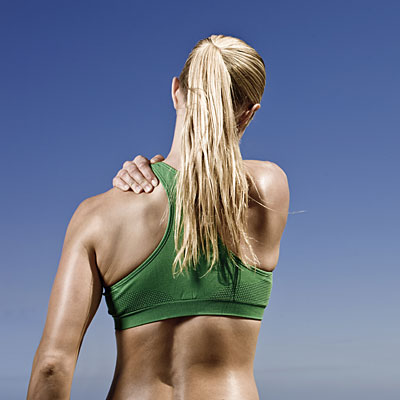
Snag the right support
Thursday, July 24, 2014
Swap out your shoes
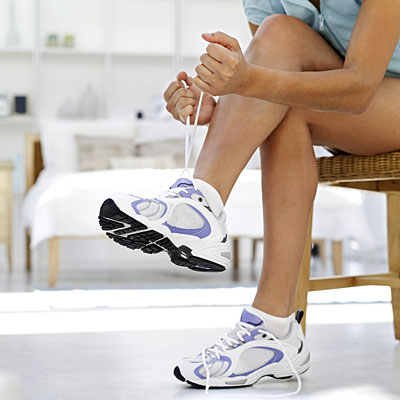
Thursday, July 10, 2014
Have a fruity ice cream sundae....Bodies by Brody

Wednesday, July 9, 2014
Up your exercise

Tuesday, July 8, 2014
Fun up your food

It's easy to get in a diet rut, even if you're loading up on flavorful fruits and veggies. The solution? Have plenty of spices, fresh herbs, and lemons at your cooking beck and call. "It's amazing what a little dash of spice, sprinkle of herbs, pinch of lemon zest, or squirt of lime juice can do to liven up a dish—and your diet," says Newgent. The best part: They contain almost no calories. Experiment with your dinner, tonight!
Monday, July 7, 2014
Be a weekend warrior

|
www.brodericksorrell.com
Thursday, July 3, 2014
Say hello to H20......(Rockville Fitness Bootcamp) www.brodericksorrell.com

Whether you're heading off to spin class, boot camp, or any other exercise, it's always important to hydrate so you can stay energized and have your best workout. Electrolyte-loaded athletic drinks, though, can be a source of unnecessary calories, so "drinking water is usually fine until you're exercising for more than one hour," says Newgent. At that point, feel free to go for regular Gatorade-type drinks (and their calories), which can give you a beneficial replenishment boost. But worry not if you like a little flavor during your fitness: There are now lower- cal sports drinks available, adds Newgent, so look out for 'em in your grocery aisles.
Wednesday, July 2, 2014
Run with this (Rockville Fitness Boot Camp) www.brodericksorrell.com
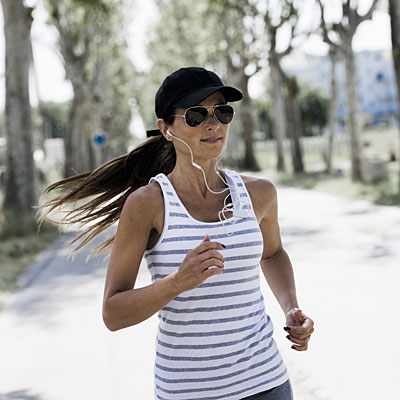
Tuesday, July 1, 2014
Turn your cheat day around www.brodericksorrell.com

Monday, June 30, 2014
Eat this, run that www.brodericksorrell.com
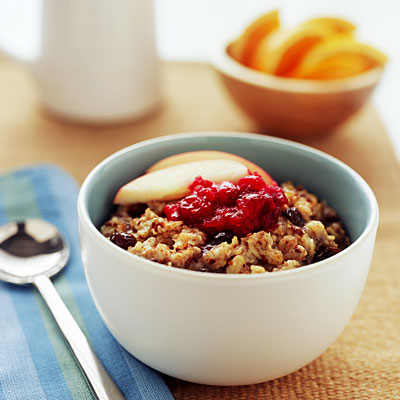
Friday, June 27, 2014
5 Ways to Boost Your Metabolism
First I just wanted to remind you that, I still needed
15 moms to lose 9lbs in 2 weeks
For a beta test group in Rockville Maryland
If you want this chance to try a lose 9lbs
contact me at brodsorrell@gmail.com
1. Stay on a schedule.
Get your body into a consistent routine during the busy work week. Our bodies love to know exactly what time we'll be able to rest, get active, eat, work and play. It’s all about creating a routine that works well for your unique body type, lifestyle and personal preferences.
If you rise with the sun after a good night's sleep, your body shouldn’t need a caffeine hit in the morning as the sun is a natural energizer and stimulant. The morning sun causes your body to release the feel good hormone serotonin, setting you up for a positive day.
3. Drink water.
We wake up dehydrated and with very acidic bodies after a solid nights sleep where the body has been busy repairing and rejuvenating. It's important to flush out any excess toxins and re-alkalize the body first thing in the morning for optimum functioning throughout the day.
4. Eat your meals at the same time each day.
Your body will keep its metabolism revved and utilize the fuel you are putting into it if you eat at set times during the day, and make healthy choices based on your energy and nutritional requirements.
5. Make sure you get some down time (and some sleep).
Rest and sleep are extremely important to keep your metabolism fired up and to support sustainable weight loss.
Thursday, June 26, 2014
Combat cocktail hour

Is it ladies' night? If you know you'll be imbibing more than one drink, feel (and sip!) right by always ordering water between cocktails, says Newgent. That way, you won't rack up sneaky liquid calories (and ruin your inhibition to resist those mozzarella sticks!). But your H20 doesn't have to be ho-hum. "Make it festive by ordering the sparkling variety with plenty of fruit, like a lime, lemon, and orange wedge in a martini or highball glass," adds Newgent.
www.brodericksorrell.com
Wednesday, June 25, 2014
Police your portions
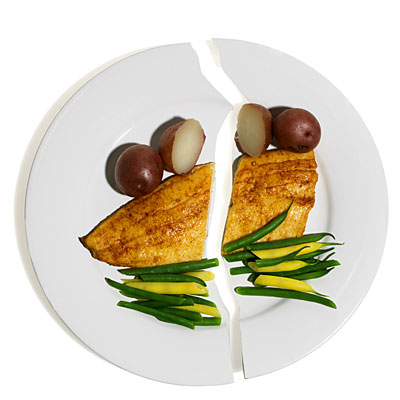
www.brodericksorrell.com
Tuesday, June 24, 2014
When to weigh

Monday, June 23, 2014
Pick your perfect tunes

Sunday, June 22, 2014
Buy comfy sneaks

Friday, June 20, 2014
How to Prevent Throwing up when Exercising
Intense exercise has a number of effects on the body. As well as raising metabolism and burning fat, it can also cause dehydration, dizziness and nausea. Whether you do cardiovascular exercise or strength training, it is not uncommon to throw up during or after a workout. There are many things that you can do to prevent this feeling and enjoy your workouts more. Nausea and vomiting are symptoms that can accompany a number of circumstances, so you can pick the most likely remedy or try a combination of preventative measures. Read more to find out how to prevent throwing up when exercising.
-
1Drink water regularly to replace the water lost during exercise. Dehydration is common among people who exercise. You should steadily drink water before, during and after a workout to replace the water you have lost.
- Other symptoms of dehydration include dry mouth, sticky mouth, thirst, decreased urine output, muscle weakness, dizziness and headaches.
- Stay hydrated by drinking at least 2 cups (473 ml) of water 1 to 2 hours before working out. Drink 2 more cups (473 ml) 20 to 30 minutes before you start exercising. During your workout, drink 1/2 cup (118 ml) of water for every 15 minutes you exercise.
-
2Never gulp water during exercise. Gulping down large quantities of water can give you a relieved feeling; however, your body has a defense mechanism of causing vomiting if your stomach is too full. Drink water in steady sips during your workout.
-
3Eat a meal 1 to 2 hours before you workout. One of the largest causes of workout sickness is low blood sugar. If your body has already used up its stores of calories you may start to sweat more than usual, feel dizzy and nauseous and pass out. The best prevention is to ensure that you eat a meal of at least 300 calories, which includes protein and carbohydrates, before your workout.
- If it is not possible for you to eat a meal a few hours before you workout, then eat a small carbohydrate-based snack and drink a protein shake after your workout. Carbohydrates are the fuel that is used during aerobic activity. Protein helps to rebuild the muscles after your workout.
-
4Do not exercise immediately after you have eaten. It is important to give your digestive system the time and energy to devote to digestion. If you do not, necessary fluids will be pulled away from your muscles and into your digestive tract.
-
5Drink a power drink, like Gatorade, during your workout, if you are prone to low blood sugar. Although fruit and sweet drinks have high levels of sugar, they can help to raise your blood sugar to safe levels and hydrate you.
-
6Avoid carbonated drinks before, during or after workouts. Carbonation or even excessive shaking of a water bottle can increase the amount of gas in your stomach after you drink. Drinking from a glass produces less gas than drinking from a water bottle.
-
1Don't close your eyes when you exercise. When you do abdominal crunches, floor exercise, yoga, pilates and weight lifting it is common for people to close their eyes and focus on the movement. Open your eyes and focus on the horizon so your body can better understand the movement, just as if you were motion sick in a car.
-
2Breathe slowly and consistently during weight training. Controlling your breathing can help to lower your blood pressure. A sharp rise in blood pressure can create the feeling of nausea and induce vomiting.
- High blood pressure is especially a problem among weight lifters. Lifting heavy weights can cause an extreme hike in blood pressure. It is important to breathe as you lift and avoid doing too much at once.
-
3Reduce your bending. If you draw in a big breath and bend over, your stomach can get the feeling of being too full and induce vomiting. Squat instead of bending, if you are breathing heavily.
-
4Reduce your workout intensity, if you are at maximum heart rate. Overexertion often leads to exercise-induced vomiting. Prevent this by increasing your workouts incrementally, so that you stay between 70 and 85 percent of maximum heart rate.
Relieve those achy muscles
After a grueling workout, there's a good chance you're going to be feeling it (we're talking sore thighs, tight calves). Relieve post-fitness aches by submerging your lower body in a cold bath (50 to 55 degrees Fahrenheit; you may have to throw some ice cubes in to get it cold enough) for 10 to 15 minutes. "Many top athletes use this trick to help reduce soreness after training sessions," says Andrew Kastor. And advice we love: "An athlete training for an important race should consider getting one to two massages per month to help aid in training recovery," adds Kastor. Now that's speaking our language!
Monday, June 16, 2014
Find the best fitness friend
Sunday, June 15, 2014
Curb your sweet tooth
Thursday, June 5, 2014
FEED The MACHINE! Nutrition Guideline
 |
| www.brodericksorrell.com |
http://www.amway.com/brodericksorrell
Avoid
1. Large amounts of read meat (and pork)
2. Fast food
3. Processed sugars (not natural sugar)
4. Alcohol (empty calories) If you're gonna drink, drink 1 bottle of water to one alcoholic beverage.
5. Dairy
6. Canned food
7. High fructose corn syrup
Must Have
1. Fruits. They satisfy your sweet tooth and are loaded with disease-fighting nutrients, yet are low in calories. Keep a stock of fresh, frozen, canned and dried fruits on hand. Eat them plain or toss into cereal, yogurt, waffles or batters. Some convenient favorites include frozen berries, dried cranberries and canned mandarin oranges. Whole fruits are usually best because of their fiber content, but if you prefer juice, be sure it's 100% juice, and enjoy it in small portions.
2. Veggies. Keep a supply of prewashed mixed greens, shredded carrots, steamed beets and shredded broccoli slaw on hand for quick and nutritious salads. Roast sweet potatoes for a side dish that needs no topping other than a little cinnamon, salt and pepper. If fresh vegetables tend to become science experiments in your refrigerator, try plain frozen vegetables. Canned vegetables are another option; just rinse thoroughly to reduce sodium. For your lunchbox or a snack, try the convenient packs of assorted veggie sticks with low-fat dip.
3. Calorie-Controlled Snacks. Little harm may be done to your diet if you choose calorie-controlled snacks. While these foods might not be the ultimate health food, sometimes you need a cookie and these packs help you limit your portion. They eliminate the chance of mindless eating so you can enjoy an indulgence without sabotaging your diet.
Check the ingredient list and nutrition facts panel and try to find snacks that offer some nutritional benefits. The most nutritious calorie-controlled snacks will have less than 3 grams of fat, less than 140 milligrams sodium, 15 grams of sugar or less and made from whole grain with about 2-3 grams of fiber and 7 grams of protein.
4. Healthier Fast Food. Every fast food restaurant usually has healthy options. Fast food restaurants don't have to spell disaster for dieters. Making the choices even easier are the nutrition numbers posted on the menus. Opt for grilled chicken, salads with light dressings, baked potato with chili or sub sandwiches with 6 grams of fat or less.
5. Diet-Friendly Desserts. Lower-calorie and portion-controlled sweets mean that desserts can usually be part of any weight loss diet. Dieters who crave ice cream love novelty ice cream cones, ice cream bars, frozen fruit bars and portion controlled treats ranging from 75-150 calories. Cookie lovers can enjoy portion controlled packs or simply choose plain cookies such as graham crackers, fig bars, vanilla wafers or gingersnaps. On the road, try chewing on a piece of sugarless gum or suck on a piece of hard candy to satisfy your sweet tooth without sabotaging your diet.
6. Flavored Mustards and Vinegars. These add sizzle to foods with very few calories. Try honey, tarragon, ginger, garlic, wasabi or Dijon mustards. In the vinegar department, experiment with balsamic, wine, herb, cider, champagne, fruit-flavored or sherry vinegars. Drizzle vinegars over steamed veggies, use mustards in place of mayonnaise or butter in recipes. When making salad dressings, use an equal amount of vinegar to oil for a calorie-saving and delicious vinaigrette.
7. Beverages. Good old-fashioned water still tops the list of healthy drinks. But when you want something more, try these virtually calorie-free options: flavored waters; powdered packets mixed into bottled water; green, herbal or exotic teas; coffee; sparkling water mixed with a splash of 100% fruit juice; vegetable juice or diet soft drinks. Low-calorie alcohol options include light beer, wine spritzers and cocktails mixed with club soda.
8. Breakfast Cereals. Research shows that people who eat breakfast control their weight better than those who skip the morning meal. Start your day the healthy way with a bowl of whole-grain cereal (top it with fruit and low-fat dairy for extra nutrition). Look for cereals with fiber and protein and not too much sugar, such as oatmeal.
9. Lean protein. Lean protein is important for dieters because it helps you feel satisfied. Excellent sources of low-fat protein include eggs; skinless poultry, edamame or other beans; nuts; shrimp; crab; fish fillets; lean cuts of beef (such as flank steak and sirloin); and pork tenderloin. When choosing meat, go for lean cuts, trim off all visible fat and control your portions. Rotisserie chicken is a dieter's staple. Remove the skin and enjoy the lean poultry meat. You can serve one as is, shred the leftovers for tacos, pasta dishes, soups, stews, quesadillas, casseroles or chop it for an entree salad. Not ready for chicken the next night? Debone it and freeze the leftover meat for a quick meal later in the week.
10. Whole Grains. Most whole grains are a good source of fiber, which helps fill you up. Try the wholegrain pasta blends or brown rice ready-to-serve. Another dieter's favorite is fat-free popcorn – crunchy, filling and a whole grain!
Monday, June 2, 2014
Got Motivation!
Take some time to buy a few magazines. Relax in a cafe over a cappuccino and look at the new spring fashions. In your mind, slip into that new dresses, blouses and slacks. Will those shoes suit you? What do you think of the colors? Let your mind wander, and think about how you plan to give your appearance a new touch in the coming weeks.
Make sure you have a smooth ride, reaching your fitness goals by reading the free tips on my blog. The link is posted below.
http://brodericksorrell.blogspot.com/
Commited to your success,
Broderick Sorrell
www.brodericksorrell.com
Follow and Share my blog if you like this post.
Thursday, May 22, 2014
Tuesday, May 13, 2014
Wednesday, May 7, 2014
Thursday, May 1, 2014
Broderick Sorrell....How to Understand and Use the Nutrition Facts Label.
For more blogs on exercise and fitness click here.
Also contact me for Free nutrition and health coaching here.
For personal training and fitness boot camps info click here.
For all natural vitamins and supplements click here.
The Nutrition Facts Label - An Overview:
The information in the main or top section (see #1-4 and #6 on the sample nutrition label below), can vary with each food product; it contains product-specific information (serving size, calories, and nutrient information). The bottom part (see #5 on the sample label below) contains a footnote with Daily Values (DVs) for 2,000 and 2,500 calorie diets. This footnote provides recommended dietary information for important nutrients, including fats, sodium and fiber. The footnote is found only on larger packages and does not change from product to product.In the following Nutrition Facts label we have colored certain sections to help you focus on those areas that will be explained in detail. You will not see these colors on the food labels on products you purchase.
 |
||
|---|---|---|
 |
 |
|
 |
 |
|
 |
 |
 |
 |
 |
 |
 |
 |
 The Serving Size
The Serving Size
 (#1 on sample label):
(#1 on sample label):The first place to start when you look at the Nutrition Facts label is the serving size and the number of servings in the package. Serving sizes are standardized to make it easier to compare similar foods; they are provided in familiar units, such as cups or pieces, followed by the metric amount, e.g., the number of grams.
The size of the serving on the food package influences the number of calories and all the nutrient amounts listed on the top part of the label. Pay attention to the serving size, especially how many servings there are in the food package. Then ask yourself, "How many servings am I consuming"? (e.g., 1/2 serving, 1 serving, or more) In the sample label, one serving of macaroni and cheese equals one cup. If you ate the whole package, you would eat two cups. That doubles the calories and other nutrient numbers, including the %Daily Values as shown in the sample label.
|
Example
|
|||||
|---|---|---|---|---|---|
| Single Serving | %DV | Double Serving | %DV | ||
| Serving Size | 1 cup (228g) | 2 cups (456g) | |||
| Calories | 250 | 500 | |||
| Calories from Fat | 110 | 220 | |||
| Total Fat | 12g | 18% | 24g | 36% | |
| Trans Fat | 1.5g | 3g | |||
| Saturated Fat | 3g | 15% | 6g | 30% | |
| Cholesterol | 30mg | 10% | 60mg | 20% | |
| Sodium | 470mg | 20% | 940mg | 40% | |
| Total Carbohydrate | 31g | 10% | 62g | 20% | |
| Dietary Fiber | 0g | 0% | 0g | 0% | |
| Sugars | 5g | 10g | |||
| Protein | 5g | 10g | |||
| Vitamin A | 4% | 8% | |||
| Vitamin C | 2% | 4% | |||
| Calcium | 20% | 40% | |||
| Iron | 4% | 8% | |||
 Calories (and Calories from Fat)
Calories (and Calories from Fat)Calories provide a measure of how much energy you get from a serving of this food. Many Americans consume more calories than they need without meeting recommended intakes for a number of nutrients. The calorie section of the label can help you manage your weight (i.e., gain, lose, or maintain.) Remember: the number of servings you consume determines the number of calories you actually eat (your portion amount).
 (#2 on sample label):
(#2 on sample label):In the example, there are 250 calories in one serving of this macaroni and cheese. How many calories from fat are there in ONE serving? Answer: 110 calories, which means almost half the calories in a single serving come from fat. What if you ate the whole package content? Then, you would consume two servings, or 500 calories, and 220 would come from fat.
- 40 Calories is low
- 100 Calories is moderate
- 400 Calories or more is high
Eating too many calories per day is linked to overweight and obesity.

 The Nutrients: How Much?
The Nutrients: How Much?Look at the top of the nutrient section in the sample label. It shows you some key nutrients that impact on your health and separates them into two main groups:
Limit These Nutrients
 (#3 on sample label):
(#3 on sample label):The nutrients listed first are the ones Americans generally eat in adequate amounts, or even too much. They are identified in yellow as Limit these Nutrients. Eating too much fat, saturated fat, trans fat, cholesterol, or sodium may increase your risk of certain chronic diseases, like heart disease, some cancers, or high blood pressure.
Important: Health experts recommend that you keep your intake of saturated fat, trans fat and cholesterol as low as possible as part of a nutritionally balanced diet.
Get Enough of These
 (#4 on sample label):
(#4 on sample label):Most Americans don't get enough dietary fiber, vitamin A, vitamin C, calcium, and iron in their diets. They are identified in blue as Get Enough of these Nutrients. Eating enough of these nutrients can improve your health and help reduce the risk of some diseases and conditions. For example, getting enough calcium may reduce the risk of osteoporosis, a condition that results in brittle bones as one ages (see calcium section below). Eating a diet high in dietary fiber promotes healthy bowel function. Additionally, a diet rich in fruits, vegetables, and grain products that contain dietary fiber, particularly soluble fiber, and low in saturated fat and cholesterol may reduce the risk of heart disease.
 Understanding the Footnote on the Bottom of the Nutrition Facts Label
Understanding the Footnote on the Bottom of the Nutrition Facts Label
 (#5 on sample label)
(#5 on sample label)Note the * used after the heading "%Daily Value" on the Nutrition Facts label. It refers to the Footnote in the lower part of the nutrition label, which tells you "%DVs are based on a 2,000 calorie diet". This statement must be on all food labels. But the remaining information in the full footnote may not be on the package if the size of the label is too small. When the full footnote does appear, it will always be the same. It doesn't change from product to product, because it shows recommended dietary advice for all Americans--it is not about a specific food product.
Look at the amounts circled in red in the footnote--these are the Daily Values (DV) for each nutrient listed and are based on public health experts' advice. DVs are recommended levels of intakes. DVs in the footnote are based on a 2,000 or 2,500 calorie diet. Note how the DVs for some nutrients change, while others (for cholesterol and sodium) remain the same for both calorie amounts.
How the Daily Values Relate to the %DVs
Look at the example below for another way to see how the Daily Values (DVs) relate to the %DVs and dietary guidance. For each nutrient listed there is a DV, a %DV, and dietary advice or a goal. If you follow this dietary advice, you will stay within public health experts' recommended upper or lower limits for the nutrients listed, based on a 2,000 calorie daily diet.
Examples of DVs versus %DVs
Based on a 2,000 Calorie Diet
| Nutrient | DV | %DV | Goal |
|---|---|---|---|
| Total Fat | 65g | = 100%DV | Less than |
| Sat Fat | 20g | = 100%DV | Less than |
| Cholesterol | 300mg | = 100%DV | Less than |
| Sodium | 2400mg | = 100%DV | Less than |
| Total Carbohydrate | 300g | = 100%DV | At least |
| Dietary Fiber | 25g | = 100%DV | At least |
Upper Limit - Eat "Less than"...
The nutrients that have "upper daily limits" are listed first on the footnote of larger labels and on the example above. Upper limits means it is recommended that you stay below - eat "less than" - the Daily Value nutrient amounts listed per day. For example, the DV for Saturated fat (in the yellow section) is 20g. This amount is 100% DV for this nutrient. What is the goal or dietary advice? To eat "less than" 20 g or 100%DV for the day.<Lower Limit - Eat "At least"...
Now look at the section in blue where dietary fiber is listed. The DV for dietary fiber is 25g, which is 100% DV. This means it is recommended that you eat "at least" this amount of dietary fiber per day.The DV for Total Carbohydrate (section in white) is 300g or 100%DV. This amount is recommended for a balanced daily diet that is based on 2,000 calories, but can vary, depending on your daily intake of fat and protein.
Now let's look at the %DVs.
 The Percent Daily Value (%DV):
The Percent Daily Value (%DV):
The % Daily Values (%DVs) are based on the Daily Value
recommendations for key nutrients but only for a 2,000 calorie daily
diet--not 2,500 calories. You, like most people, may not know how many
calories you consume in a day. But you can still use the %DV as a frame
of reference whether or not you consume more or less than 2,000
calories.The %DV helps you determine if a serving of food is high or low in a nutrient. Note: a few nutrients, like trans fat, do not have a %DV--they will be discussed later.
Do you need to know how to calculate percentages to use the %DV? No, the label (the %DV) does the math for you. It helps you interpret the numbers (grams and milligrams) by putting them all on the same scale for the day (0-100%DV). The %DV column doesn't add up vertically to 100%. Instead each nutrient is based on 100% of the daily requirements for that nutrient (for a 2,000 calorie diet). This way you can tell high from low and know which nutrients contribute a lot, or a little, to your daily recommended allowance (upper or lower).
Quick Guide to %DV:
 5%DV or less is low and 20%DV or more is high
5%DV or less is low and 20%DV or more is high (#6 on sample label):
This guide tells you that 5%DV or less is low for all nutrients, those you want to limit (e.g., fat, saturated fat, cholesterol, and sodium), or for those that you want to consume in greater amounts (fiber, calcium, etc). As the Quick Guide shows, 20%DV or more is high for all nutrients.
Example: Look at the amount of Total Fat in one serving listed on the sample nutrition label. Is 18%DV contributing a lot or a little to your fat limit of 100% DV? Check the Quick Guide to %DV. 18%DV, which is below 20%DV, is not yet high, but what if you ate the whole package (two servings)? You would double that amount, eating 36% of your daily allowance for Total Fat. Coming from just one food, that amount leaves you with 64% of your fat allowance (100%-36%=64%) for all of the other foods you eat that day, snacks and drinks included.
|
1 serving |
 |
|---|---|
| 2 servings |  |
Using the %DV for:
Comparisons: The %DV also makes it easy for you to make comparisons. You can compare one product or brand to a similar product. Just make sure the serving sizes are similar, especially the weight (e.g. gram, milligram, ounces) of each product. It's easy to see which foods are higher or lower in nutrients because the serving sizes are generally consistent for similar types of foods, (see the comparison example at the end) except in a few cases like cereals.Nutrient Content Claims: Use the %DV to help you quickly distinguish one claim from another, such as "reduced fat" vs. "light" or "nonfat." Just compare the %DVs for Total Fat in each food product to see which one is higher or lower in that nutrient--there is no need to memorize definitions. This works when comparing all nutrient content claims, e.g., less, light, low, free, more, high, etc.
Dietary Trade-Offs: You can use the %DV to help you make dietary trade-offs with other foods throughout the day. You don't have to give up a favorite food to eat a healthy diet. When a food you like is high in fat, balance it with foods that are low in fat at other times of the day. Also, pay attention to how much you eat so that the total amount of fat for the day stays below 100%DV.
Nutrients With a %DV but No Weight Listed - Spotlight on Calcium:
 Calcium: Look at the %DV for calcium on food packages so you know how much one serving contributes to the total amount you need
per day. Remember, a food with 20%DV or more contributes a lot of
calcium to your daily total, while one with 5%DV or less contributes a
little.
Calcium: Look at the %DV for calcium on food packages so you know how much one serving contributes to the total amount you need
per day. Remember, a food with 20%DV or more contributes a lot of
calcium to your daily total, while one with 5%DV or less contributes a
little.Experts advise adult consumers to consume adequate amounts of calcium, that is, 1,000mg or 100%DV in a daily 2,000 calorie diet. This advice is often given in milligrams (mg), but the Nutrition Facts label only lists a %DV for calcium.
For certain populations, they advise that adolescents, especially girls, consume 1,300mg (130%DV) and post-menopausal women consume 1,200mg (120%DV) of calcium daily. The DV for calcium on food labels is 1,000mg.
Don't be fooled -- always check the label for calcium because you can't make assumptions about the amount of calcium in specific food categories. Example: the amount of calcium in milk, whether skim or whole, is generally the same per serving, whereas the amount of calcium in the same size yogurt container (8oz) can vary from 20-45 %DV.
Equivalencies 30% DV = 300mg calcium = one cup of milk 100% DV = 1,000mg calcium 130% DV = 1,300mg calcium
Nutrients Without a %DV: Trans Fats, Protein, and Sugars:
Note that Trans fat, Sugars and, Protein do not list a %DV on the Nutrition Facts label.Plain Yogurt |
Fruit Yogurt |
|---|
Important: Health experts recommend that you keep your intake of saturated fat, trans fat and cholesterol as low as possible as part of a nutritionally balanced diet.
Protein: A %DV is required to be listed if a claim is made for protein, such as "high in protein". Otherwise, unless the food is meant for use by infants and children under 4 years old, none is needed. Current scientific evidence indicates that protein intake is not a public health concern for adults and children over 4 years of age.
Sugars: No daily reference value has been established for sugars because no recommendations have been made for the total amount to eat in a day. Keep in mind, the sugars listed on the Nutrition Facts label include naturally occurring sugars (like those in fruit and milk) as well as those added to a food or drink. Check the ingredient list for specifics on added sugars.
Take a look at the Nutrition Facts label for the two yogurt examples. The plain yogurt on the left has 10g of sugars, while the fruit yogurt on the right has 44g of sugars in one serving.
Now look below at the ingredient lists for the two yogurts. Ingredients are listed in descending order of weight (from most to least). Note that no added sugars or sweeteners are in the list of ingredients for the plain yogurt, yet 10g of sugars were listed on the Nutrition Facts label. This is because there are no added sugars in plain yogurt, only naturally occurring sugars (lactose in the milk).

Fruit Yogurt - contains added sugars

To limit nutrients that have no %DV, like trans fat and sugars, compare the labels of similar products and choose the food with the lowest amount.
Comparison Example
| Below are two kinds of milk- one is "Reduced
Fat," the other is "Nonfat" milk. Each serving size is one cup. Which
has more calories and more saturated fat? Which one has more calcium? |
|
| REDUCED FAT MILK 2% Milkfat |
NONFAT MILK |
|---|---|
 |
 |
This document was issued in June 2000 and updated July 2003 and November 2004.













